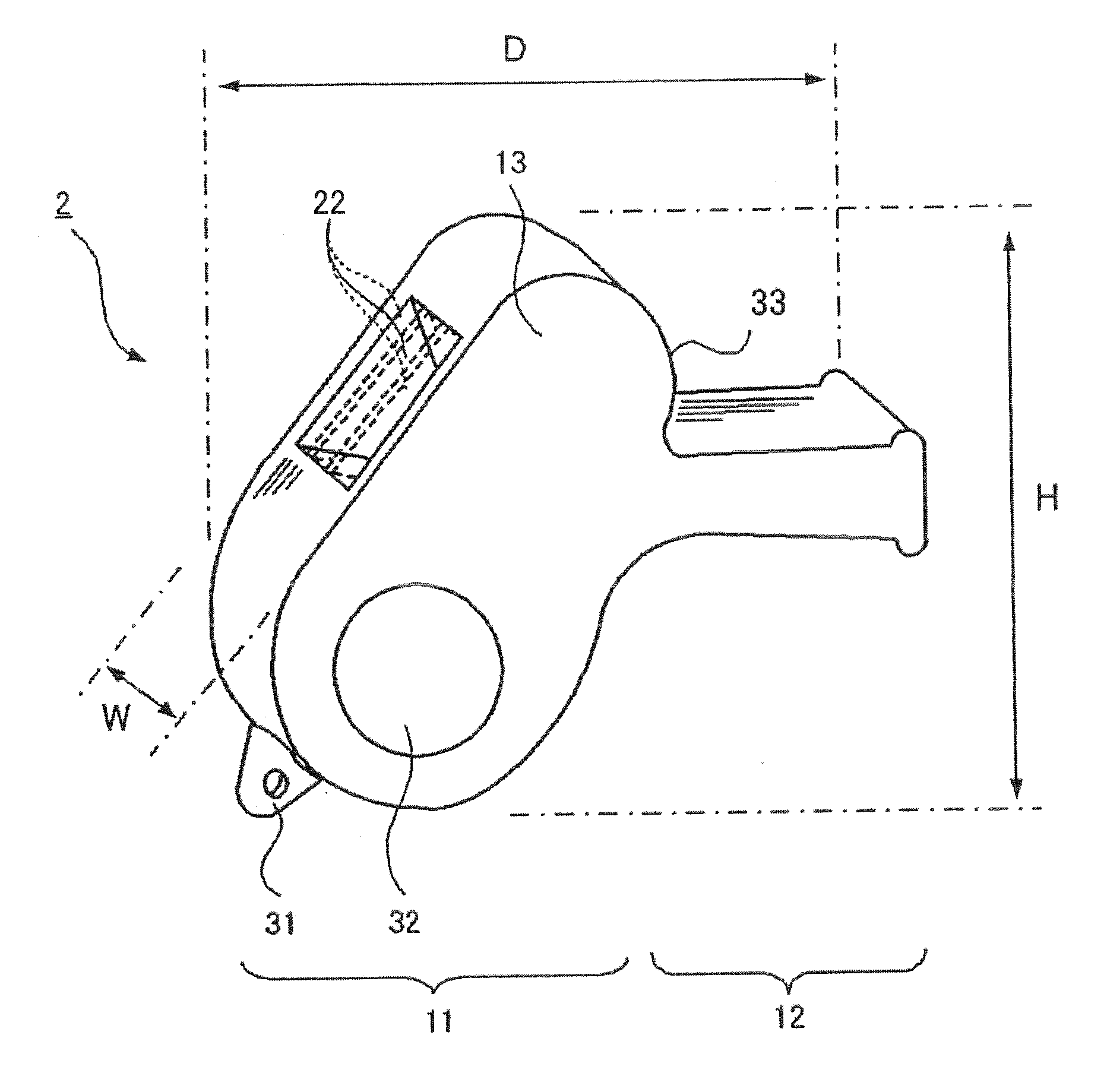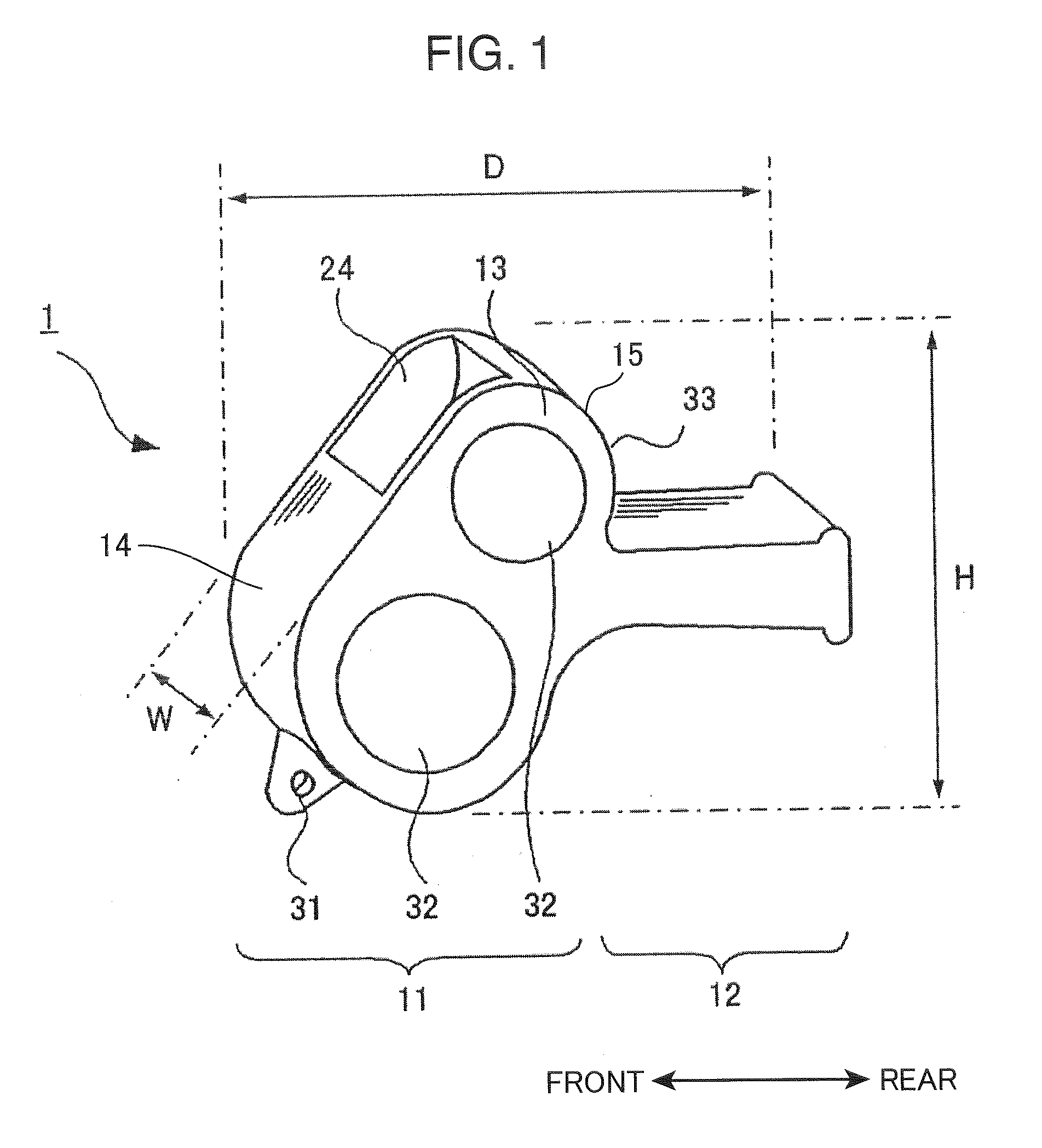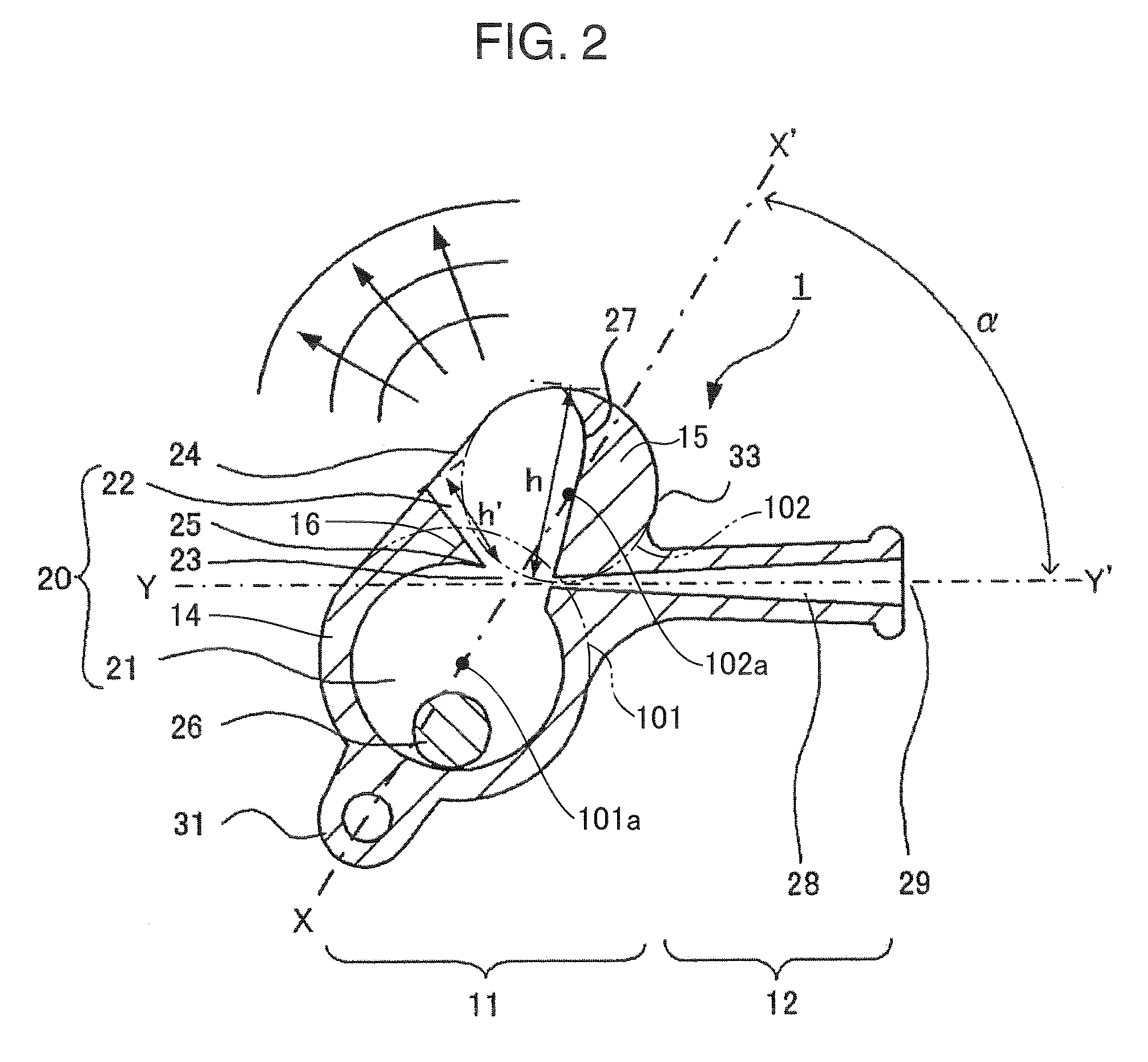Whistle
a technology of whistle and resonance chamber, which is applied in the field of whistle, can solve the problems of poor design, shrill and unpleasant sounds, and the size of the resonance chamber cannot meet the need for a small and lightweight whistle, and achieve the effect of suppressing the hardness of hearing or ringing of the ears of whistle-blowers, reducing the resonance frequency and reducing the size of the resonance chamber
- Summary
- Abstract
- Description
- Claims
- Application Information
AI Technical Summary
Benefits of technology
Problems solved by technology
Method used
Image
Examples
first embodiment
[0038]The whistle 1 of a first embodiment of the invention is explained, referring to FIG. 1 and FIG. 2. The whistle 1 is a so-called pea-type whistle. FIG. 1 is a perspective view showing the external appearance of the whistle 1. FIG. 2 is a cross-sectional view of the whistle 1.
[0039]The whistle 1 comprises a body portion 11 and a mouthpiece portion 12.
[0040]The body portion 11 has a vertically long and narrow shape. This body portion 11 has a connected resonance chamber 20. The body portion 11 has right and left side plates 13, extending in the vertical direction and forming the connected resonance chamber 20; a front wall 14, extending horizontally on the front side between these side plates; and a rear wall 15, extending horizontally between these side plates. The connected resonance chamber 20 comprises a first resonance chamber 21, a second resonance chamber 22, and an orifice 23. The front face, that is, the outside face of the front wall 14 of the body portion 11 is incline...
second embodiment
[0077]The whistle 2 of a second embodiment is explained, referring to FIG. 4 and FIG. 5. FIG. 4 is a perspective view showing the external appearance of the whistle 2, and FIG. 5 is a cross-sectional view of the whistle 2. The whistle 2 is a so-called pealess-type whistle.
[0078]Similarly to the resonance chamber of an ordinary pealess-type whistle, the first resonance chamber 21 is a rectangular parallelepiped-shape space. However, the first resonance chamber 21 of the whistle 2 of the second embodiment is inclined forward and downward.
[0079]The second resonance chamber 22 widens toward the sound-emitting opening 24, and the sound-emitting opening 24 opens in the front face of the body portion 11 formed forward and downward, and directs forward and upward. The air passageway 28 is flexed downward midway, and the front end of this air passageway 28 opens forward and slightly downward. The angle β made by the axis X-X′ of the body portion 11 and the axis Y-Y′ of the mouthpiece portion...
embodiment 1
[0083]A pea-type whistle 1 of the above first embodiment, and as a reference example a whistle the same size as this but with the second resonance chamber removed, that is, similar to the whistle 503 shown in FIG. 9A, were fabricated, and the frequency characteristics of each were measured. And, examination to determine whether there was a shift to the low-frequency side of sound waves of the whistle 1 of the first embodiment was performed. Also, an examination was performed to determine whether the resonance sound was increased and the sound had more richness. The heights of the second resonance chamber of the whistle of the first embodiment used in measurements were h=14 mm and h′=10 mm.
[0084]A sound-level meter was installed at a position 1 m forward from each of the whistles in an anechoic chamber. Compressed air corresponding to human exhalation was supplied to the air opening from a compressor, and differences in sound quality due to the presence or absence of the second reson...
PUM
 Login to View More
Login to View More Abstract
Description
Claims
Application Information
 Login to View More
Login to View More - R&D
- Intellectual Property
- Life Sciences
- Materials
- Tech Scout
- Unparalleled Data Quality
- Higher Quality Content
- 60% Fewer Hallucinations
Browse by: Latest US Patents, China's latest patents, Technical Efficacy Thesaurus, Application Domain, Technology Topic, Popular Technical Reports.
© 2025 PatSnap. All rights reserved.Legal|Privacy policy|Modern Slavery Act Transparency Statement|Sitemap|About US| Contact US: help@patsnap.com



